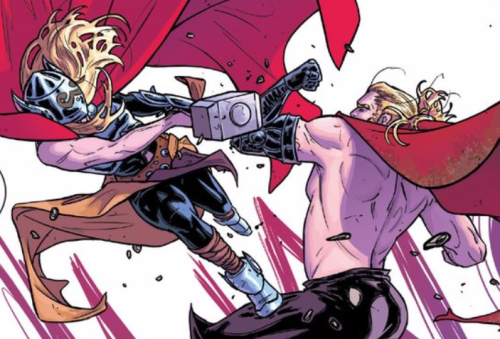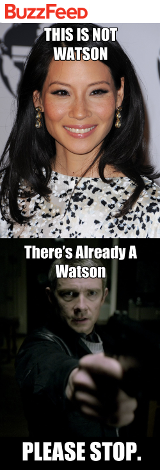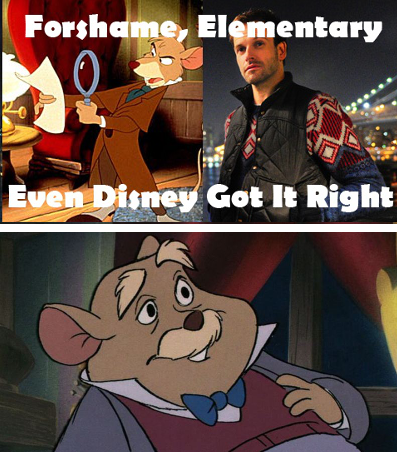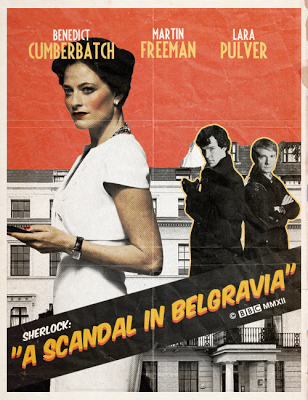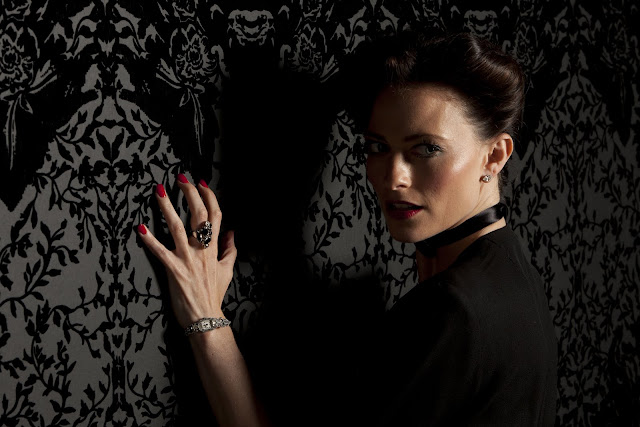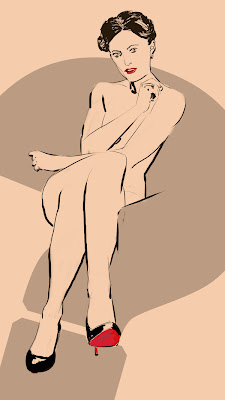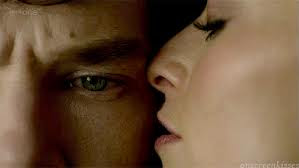Trigger Warning for the sexual assault, physical abuse, and murder of female characters.
The BBC will soon be releasing its Sherlock Christmas special called Sherlock: The Abominable Bride, and I know I’m not the only person tired of women in Sherlock being portrayed as “abominable,” less-than Sherlock and the other male characters in the show, and forcibly subjugated – often reduced to tears. Sure, the male characters on the show are often shown as far from Sherlock’s intellectual equal, but the female characters are treated far worse story-wise than the men are. However, the BBC’s Sherlock is far from the only Sherlock Holmes adaptation to treat its female characters badly, often far worse than the original Sir Arthur Conan Doyle stories. Not only are women subjugated to make the men look better, women are used as props to heteronormatize Sherlock Holmes and John Watson. But women are human beings, just like men, not objects. And Sherlock Holmes has been adapted so many times, while I’m still waiting for a series on the fabulously infamous Irene Adler, one of the only people to ever “outwit” him.
Sherlock Holmes is one of the most frequently portrayed fictional characters of all time, though most often played by heterosexual White British cismen and anthropomorphic animals, with Sherlock Holmes and the Case of the Silk Stocking and the upcoming sHerlock being rare exceptions. Conan Doyle’s famous detective can easily be read as any sexuality, mostly because he prioritizes work over everything else, and therefore has practically no love life whatsoever. Story-wise (ignoring Conan Doyle’s excuses for Sherlock’s singlehood), he could very well be asexual, and indeed he is a hero for the asexual community. He could also be bisexual, homosexual, heterosexual, or any other sexuality, and could be any combination of those with any romantic orientation – aromantic, biromantic, homoromantic, heteroromantic, etc. Collectively, most of the adaptations of Sherlock Holmes result in erasure of sexual and romantic orientations that are not heteronormative. This is particularly damaging to the asexual community, due to their strong identification with Sherlock Holmes and what they see as his queerplatonic relationship with Dr. John Watson.
Whether Holmes’ relationship with Watson is queerplatonic, romantic and/or sexual, or more traditionally platonic is up to speculation or interpretation. However, nearly every adaptation forces heteronormativity onto the character one way or another, usually with female characters, and even while sometimes simultaneously queerbaiting the audience, seemingly for both humor and fanservice. This is particularly evident in BBC’s Sherlock (see Erin Tatum’s amazing Bitch Flicks post), Sherlock Holmes (2009), and Sherlock Holmes: Game of Shadows (so much queerbaiting, including a lovely choreographed waltz). Meanwhile, in numerous adaptations of Sherlock Holmes canon, including those directly listed above, female characters mainly or only exist to heteronormatize Sherlock Holmes and his friend (or possible “friend”) Dr. John Watson. Occasionally, and more in the past than in the present, Watson’s importance to the narrative is even minimized to make room for Sherlock to have a romance, such as in Sherlock Holmes (1922) starring John Barrymore as the title role, though also in House M.D. (played by Hugh Laurie), to an extent.
In They Might Be Giants (George C. Scott as Holmes/Justin and Joanne Woodward as Watson) and Elementary (Jonny Lee Miller as Holmes and Lucy Liu as Watson), the roles of Watson and the heteronormatizing woman are combined, as a female Watson to a male Holmes ensures that any close feelings between Holmes and Watson can be read as heteronormatively romantic. This is albeit, thanks to good writing and acting, done in a way in which Watson does have some agency, especially in Elementary, as written about in Robin Hitchcock’s post for Bitch Flicks.
Despite female adaptations of Watson becoming more popular, Irene Adler, though having only ever appeared in one of Conan Doyle’s stories, “A Scandal in Bohemia,” and briefly mentioned in a few more of them, is most often used when Hollywood or the BBC desires to heterosexualize the detective. Indeed, Irene Adler is often portrayed as the Catwoman to Sherlock Holmes’ Batman, particularly in Sherlock Holmes (2009) and Sherlock Holmes: A Game of Shadows (2011), played by Rachel McAdams to Robert Downey Jr.’s Holmes. However, women are often objectified in Sherlock Holmes adaptations to the point that they are often damsels in distress (such what Irene Adler was reduced to in the BBC’s Sherlock, played by Lara Pulver to Benedict Cumberbatch’s Holmes) or women in refrigerators, to which Irene is also not immune. In Sherlock Holmes: A Game of Shadows, Irene Adler is (infuriatingly!) fridged in order to make Holmes sad and revengeful and oh so heterosexual amidst all the homoeroticism he has with Jude Law’s “Hotson” (as if the detective couldn’t possibly be bisexual…). She is then soon replaced in his (somewhat) heteronormatized heart by a racist depiction of a Roma woman, played by Noomi Rapace.
However, Irene Adler is not the only choice for fridging. For example, in Chris Columbus’ Young Sherlock Holmes, Holmes’ love interest Elizabeth (played by Sophie Ward to Nicholas Rowe’s Holmes) survives until the very end of the film, thereby fridging her for motivational and heteronormative purposes less within the prequel film itself and moreover in the larger Sherlock Holmes storyline. By killing off Elizabeth, this adaptation also seeks to justify Holmes’ singlehood throughout the rest of his life (as Elizabeth was shown to be his one-true-love), as well as to heighten his nemesistic relationship with Moriarty (as he was responsible for Elizabeth’s death).
While usually the focus of heteronormatizing in these adaptations is Holmes, Watson can alternatively be the focus, usually by Watson’s marriage to Mary Morstan, such as in the BBC’s Sherlock (played by Amanda Abbington) and in Sherlock Holmes (2009) and Sherlock Holmes: A Game of Shadows (played by Kelly Reilly). This often serves the dual purpose of heteronormatizing the Holmes/Watson relationship and showing Holmes as lonely and more sympathetic. This is particularly emphasized in the 2002 TV film Sherlock Holmes and the Case of the Silk Stocking (starring Rupert Everett), though in this case Watson (Ian Hart) marries a sex-positive feminist American psychoanalyst named Mrs. Jenny Vandeluer (Helen McCrory).
As producer Elinor Day pointed out in the DVD commentary, a sequel in which the three of them were a team – Sherlock, Jenny, and John – would be amazing (though it sadly seems unlikely to happen now). Though the BBC’s Sherlock gets a similar trio-dynamic with the introduction of Mary, Mary is subjugated and ashamed, while Jenny openly defies Sherlock’s misogyny and heartlessness, and he would not have been able to solve his case at all without her. Sadly, though Jenny is an amazing character, Sherlock Holmes and the Case of the Silk Stocking falls short of being a feminist film. Under the guise of critiquing rape culture, the film in many ways fetishizes the physical and sexual abuse of young women and girls, emphasized by the camera movements and the focus on the helpless sounds the girls make while they are being gagged and suffocated.
Though the upcoming sHERlock, starring Helen Davies in the title role, is certainly exciting, I personally think that instead of the message being “women can fill Sherlock’s shoes” (which they most certainly can), the message could be “women don’t need Sherlock, and are awesome on their own,” especially when it comes to Irene Adler. Irene Adler’s character has been tweaked and even completely reimagined numerous times to fit male-contrived adaptations of the (admittedly male-contrived) Sherlock Holmes canon, sadly often coming short of her original depiction – though also not free from its problems. Irene Adler deserves her own series, whatever the story may be, and whatever part of her life is the focus.
Irene Adler never needed Sherlock Holmes or any man (including the Czech King who hired Sherlock to face her in the first place), and when she finds love (with a man who is neither the king nor Holmes), it’s on her terms. Irene Adler only appears in one of Conan Doyle’s stories because she has her own life, and it does not rotate around nor even involve Sherlock Holmes. She is a clever, intelligent, resourceful, sex-positive woman in control of her own life, her own body, and her own destiny, and deserves not only a writer to do her justice, but a series to completely center her and all her fantastic escapades. Women do not exist to heteronormatize men – they exist to lead their own lives. Hollywood and the BBC would do well to learn that, as well as to get over their obvious fear and terrible oppression of anything not heteronormative.



















